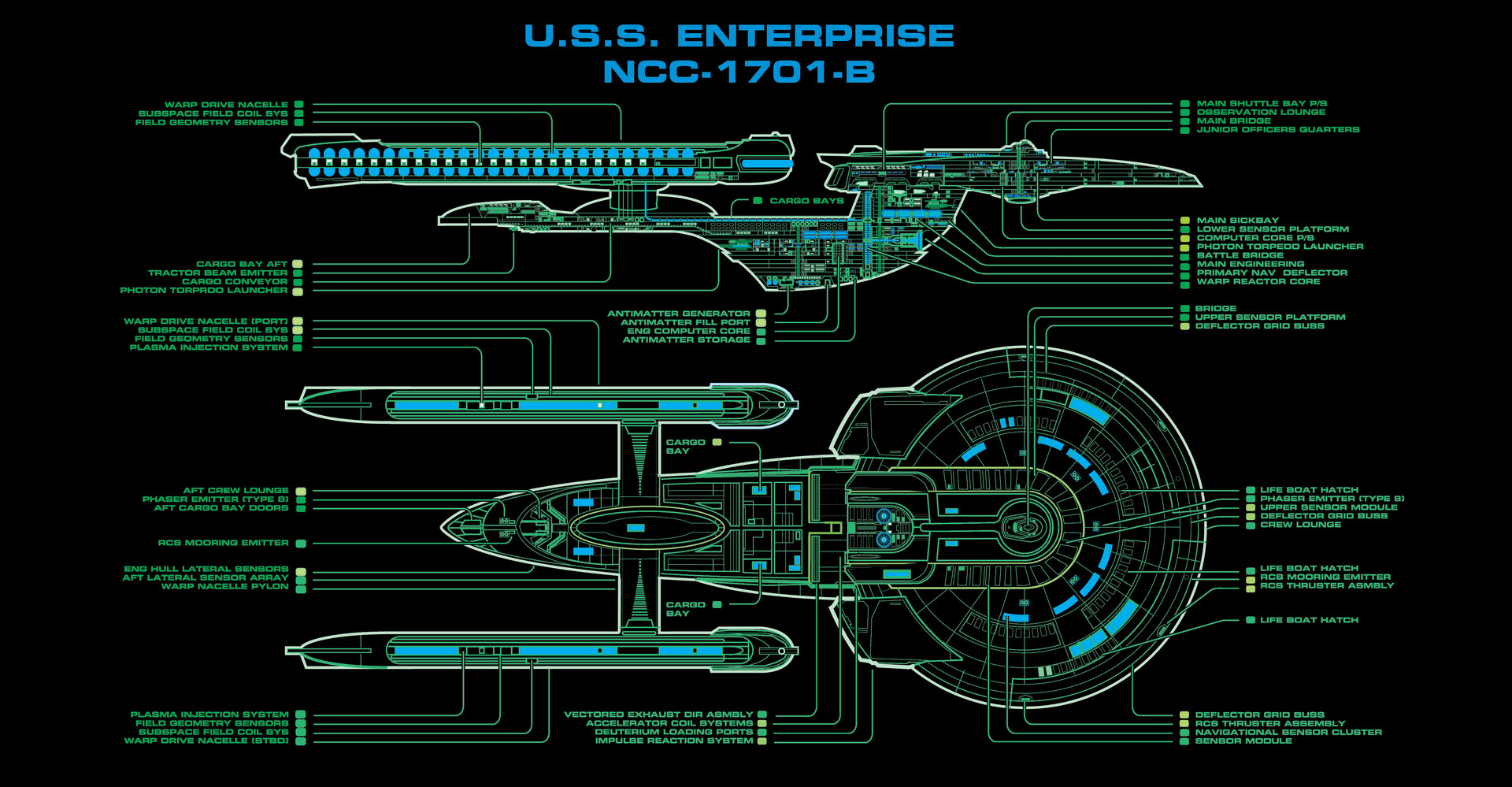24 Apr 2021
Olympic Class (USS Pasteur) studio model - reference photos
23 Apr 2021
The size of the Enterprise-E ARGO Shuttle
The shuttlecraft ARGO - seen in Star Trek Nemesis - was designed by artist John Eaves. Eaves classified the Argo as a heavy transport shuttle. It includes a buggy for planetary ground missions.
For my calculation I used the real size of the ARGO buggy. According to blueprint, the car is 5.33 m (17.5 feet) long.
Taking into account the size of the loading hatch, this results in a length of 20.04 m for the ARGO. In addition, this length allows a cockpit height of 2m.
 |
| blueprint ARGO buggy |
7 Dec 2020
STAR TREK Size Comparison Charts - Ships from TNG to DS9
Here are the size chart with the ships from the Alpha, Beta and Gamma Quadrant.
PS: A special thank (and all copyright) for the picture material to: John Eaves, Drex Files, Star Trek Fact Files and Star Trek The Magazine, Starship Collection Magazine and The Light Works.
Size calculations:
__________
6 Dec 2020
STAR TREK Size Comparison Charts - Starfleet and Earth Ships
Here are the size chart with the ships from the Alpha, Beta and Gamma Quadrant.
PS: A special thank (and all copyright) for the picture material to: John Eaves, Drex Files, Star Trek Fact Files and Star Trek The Magazine, Starship Collection Magazine and The Light Works.
Size calculations:
__________
5 Dec 2020
STAR TREK Size Comparison Charts - Space Stations from DS9
Here are the size chart with the Space Stations and Outposts seen in Star Trek Deep Space Nine.
PS: A special thank (and all copyright) for the picture material to: John Eaves, Drex Files, Star Trek Fact Files and Star Trek The Magazine, Starship Collection Magazine and The Light Works.
Size calculations:
__________
STAR TREK Size Comparison Charts - Space Stations from VOYAGER
Here are the size chart with the Space Stations and Outposts seen in Star Trek Voyager - including Starbase Copernicus from "Borg Invasion 4D".
PS: A special thank (and all copyright) for the picture material to: John Eaves, Drex Files, Star Trek Fact Files and Star Trek The Magazine, Starship Collection Magazine and The Light Works.
Ships seen in Star Trek Voyager:
__________
30 Oct 2020
The size of the Excelsior Class
The Excelsior-class was a type of Federation starship used by Starfleet from the late 23rd century through the late 24th century. As a long-range research vessel, it was the backbone of Starfleet for nearly a century, making it one of the fleet's longest-serving spaceship designs. The Excelsior-class was later replaced by the Sovereign-class.
Commented on this by Bill George of ILM:
- The premise for all my deck calculations: a deck is 2.5m + 0.5m for EPS cables, power cables, ... = 3m height for a deck.
- My calculations follow a purely mathematical approach. I do not compare bridge modules or disk heights with each other. I always pull in decks based on the rows of windows and then calculate a physically plausible room height.
If you consider two decks for the outer part of the saucer (deck 7 + 8), the result is a perfect division of the decks for the whole ship. This gives the height of the neck to the main body an even number of decks.
 |
| schematic by TheLightWorks |
The large MSD (Master Systems Display) from the background of the Excelsior class bridge also gives the number of decks that I calculated: 32.
 |
| Doug Drexler with his MSD of the Enterprise-B (artstation.com) |
 |
| MSD Enterprise-B by Doug Drexler (artstation.com) |
Incidentally, this division also corresponds exactly with the additional construction on the main body of the Excelsior Refit (USS Enterprise-B). The place where the Nexus energy ribbon hits the Enterprise-B and thereby pulls Captain Kirk into the Nexus is exactly two decks high.
| screencapture by trekcore.com (Star Trek: Generations) |
According to Andrew Probert's size chart (he extended the ILM chart for Star Trek: The Next Generation, sizing his Ambassador concept halfway between the Excelsior and the Galaxy class), the official length of the ship is 467m (1531 ft). If you pull decks into the side view of the spaceship, this size seems a bit too small.
"The only description we had at the time was that it was "souped-up" and bigger than the Enterprise. The size the miniature was built to was determined by the camera guys as being the optimal size to shoot. As I recall Nilo [Rodis-Jamero] did that size comparison chart, but it wasn't necessarily followed. The issue of true scale wasn't a consideration. Budget, ease of use, art direction and dramatic intent were what influenced the construction of the ship."
After calculating the decks, this results in a length of 606.9m.
If the Excelsior class were 467m long, then its decks would be only 2.3m high (inclusive 0.5m for EPS cables, power cables, ...). Then only 1.80 m remained for the clear height of the rooms.
The size of 606.9m corresponds much more to what can be seen optically in the Star Trek series:
screencap TNG: "Encounter at Farpoint" by trekcore.com |
Subscribe to:
Posts (Atom)







